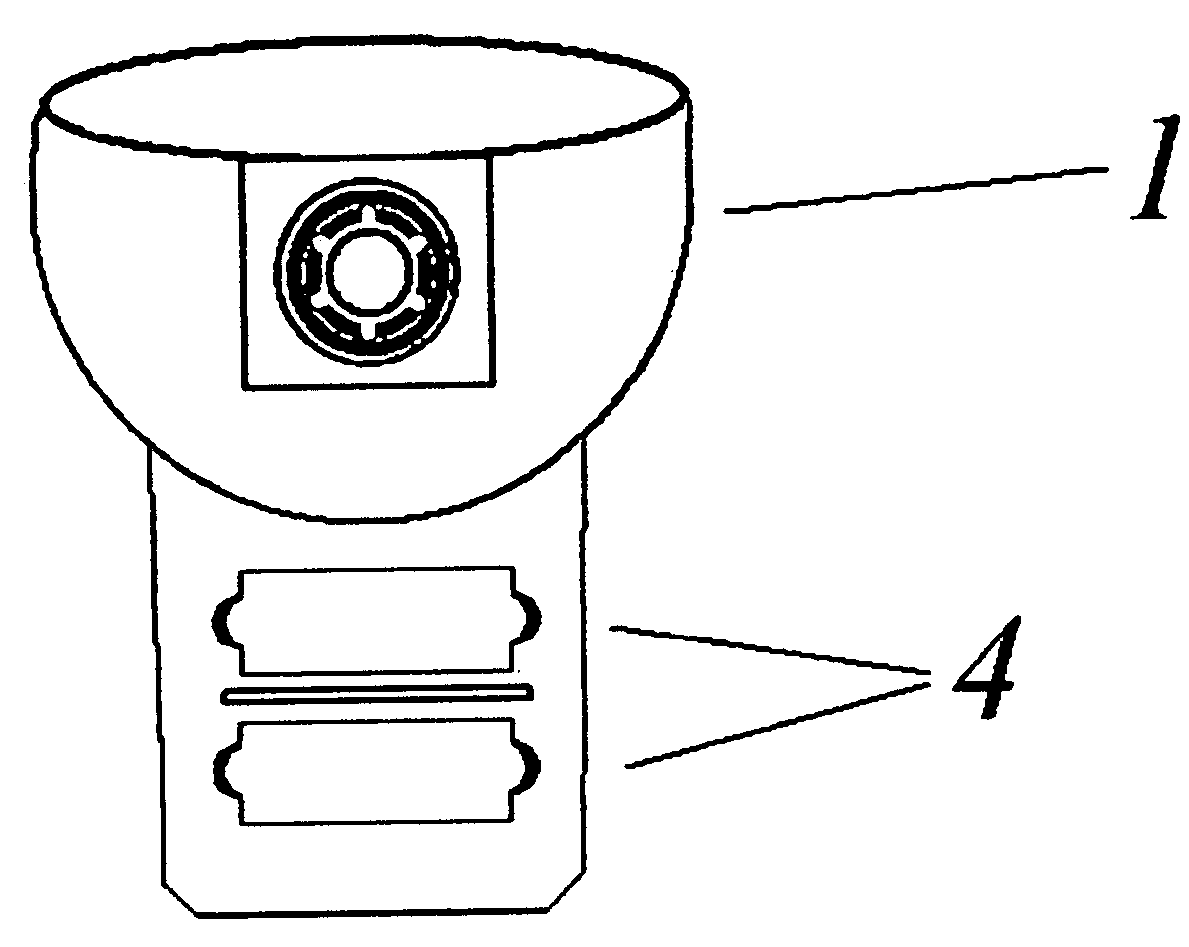The ball throwing device (1) (FIG. 1) can be attached to a dog leash (2) (FIG. 2) or purposely made length of strap (3) (FIG. 10) using the purposely designed
handle on the ball throwing device (4) (FIG. 1) or loop (15) (FIG. 10) or cord lock
handle (12) (FIG. 19). With the ball throwing device (1) (FIG. 11) securely attached to a dog leash (2), the clasp end of the dog leash (5) can then be connected to a supplied
retaining ring (6) located on the leash
handle (7). The ball throwing device can be used for picking up a ball (8) (FIG. 6)
hands free. This is achieved by placing the ball throwing device (1) over a ball (8) (FIG. 9) and pressing down firmly. The ball throwing device (1) fits neatly over the ball (8) and is able to hold the ball securely. The ball throwing device (1) (FIG. 5) could have an adjustable mechanism (9) or (FIG. 22) threaded knob (13) entering a threaded
washer (14) for the purpose of controlling the distance that a ball (8) can be thrown. This can be achieved by rotating an adjuster knob (10) (FIG. 5) or (13) (FIG. 22), which is located on the outside edge of the housing cup hemisphere. The adjuster knob (10) (FIG. 5), which when rotated, causes a tapered inner plate (9) (FIG. 3) located on the inside of the housing cup (11) to revolve (FIG. 4) and can be used to decrease the overall size of the housing cup's (1) (FIG. 5) inner casing hemisphere (11). The threaded knob (13) (FIG. 22) can also be used to decrease the overall size of the inner casing hemisphere (11) by rotating the threaded knob (13) inward. With the ball throwing device (1) (FIG. 12) attached or incorporated into a dog lead (2) (FIG. 11) or strap (3) FIG. 10), the lead / strap can be swung in a forward / over arm throwing motion (FIG. 12), allowing the ball (8) to be projected. The projection of a ball is achieved by the ball releasing from the housing cup (1) through the use of
centrifugal force. The distance a ball (8) can be thrown depends on which position the adjuster mechanism plate (9) (FIG. 14) is set. With the adjuster knob (10) rotated so that the tapered inner plate (9) (FIG. 3) is recessed and in the downward position, the tapered plate (9) falls behind the line of the inner casing hemisphere (11) (FIG. 14). The adjuster, whilst in the downward position, causes no interference with the ball (8) held within the housing cup (1) and enables the ball (8) to release and exit from the ball throwing device (1) with less force and
momentum that is applied through the over arm swinging action of the leash (2) or strap (3) (FIG. 12). With the adjuster mechanism (9) (FIG. 4) in the upward position, the tapered inner plate (9) (FIG. 15) falls to the outside line of the housing cup's inner casing hemisphere (11). The tapered plate (9) (FIG. 5) whilst in this upward position, reduces the overall size of the inner casing hemisphere (11) which in turn, interferes and tightens the ball (8) (FIG. 9) against the housing cup's inner casing hemisphere (11) therefore holding the ball (8) inside the housing cup (1) more securely. The upward position of the tapered plate (9) (FIG. 5) also requires the user to apply more force to the over arm throwing action (FIG. 12) to enable the ball (8) to release and exit from the ball throwing device (1) with greater force and
momentum, which in turn results in the ball (8) travelling further. The ball throwing device (1) (FIG. 6) is designed so that it can be held on the dog leash (2) whilst not in use, with or without the ball (8) inserted (FIG. 16). This feature enables the user to avoid having to place the dirty, messy ball (8) in their pocket or bag.
 Login to View More
Login to View More  Login to View More
Login to View More 


